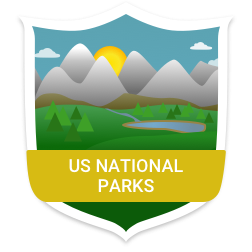US National Parks

US National Parks
The United States has 63 National Parks spread across 30 states and 2 territories. Yellowstone became the fist national park in 1872. Today, California is home to 9 parks with Alaska following close behind with 8. Alaska contains the 4 largest parks, the biggest, Wrangell-St. Elias is larger than 9 U.S. states. The park system now protects millions of acres of natural habitat for many endangered plant and animal species.































































